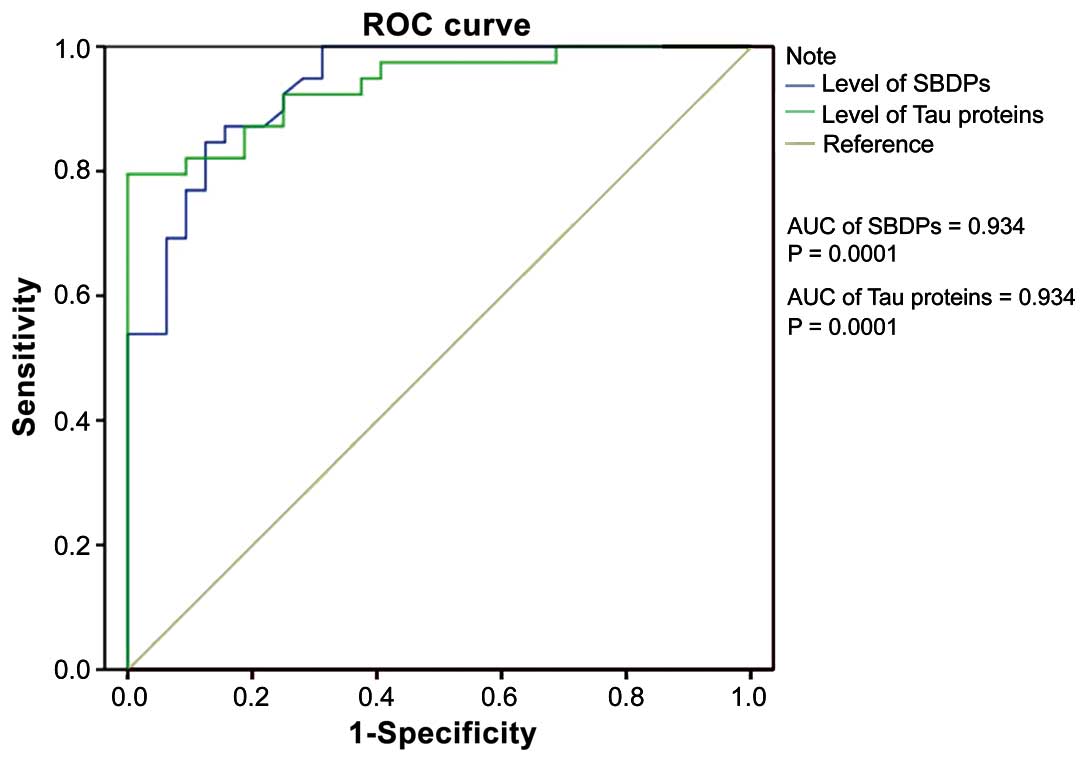|
1
|
Boix H: Are we doing our best for our
patients with hypoxic-ischaemic encephalopathy? An Pediatr (Barc).
May 24–2016.(In Spanish) (Epub ahead of print).
|
|
2
|
Xu J, Gang QQ, Hao P and Zhang JN:
Pathological and magnetic resonance imaging findings in a neonatal
Tibet minipig model of hypoxic-ischemic encephalopathy. Nan Fang Yi
Ke Da Xue Xue Bao. 36:705–709. 2016.(In Chinese). PubMed/NCBI
|
|
3
|
Rumajogee P, Bregman T, Miller SP, Yager
JY and Fehlings MG: Rodent hypoxia-ischemia models for cerebral
palsy research: a systematic review. Front Neurol. 7:572016.
View Article : Google Scholar : PubMed/NCBI
|
|
4
|
Chen S, Shi Q, Zheng S, Luo L, Yuan S,
Wang X, Cheng Z and Zhang W: Role of α-II-spectrin breakdown
products in the prediction of the severity and clinical outcome of
acute traumatic brain injury. Exp Ther Med. 11:2049–2053.
2016.PubMed/NCBI
|
|
5
|
Lv H, Wang Q, Wu S, Yang L, Ren P, Yang Y,
Gao J and Li L: Neonatal hypoxic ischemic encephalopathy-related
biomarkers in serum and cerebrospinal fluid. Clin Chim Acta.
450:282–297. 2015. View Article : Google Scholar : PubMed/NCBI
|
|
6
|
Elbahtiti A, Aly NY, Abo-Lila R and
Al-Sawan R: Therapeutic hypothermia for infants with hypoxic
ischemic encephalopathy: a five years' single center experience in
Kuwait. J Neonatal Perinatal Med. 9:179–185. 2016. View Article : Google Scholar : PubMed/NCBI
|
|
7
|
Demarest TG, Schuh RA, Waddell J, McKenna
MC and Fiskum G: Sex-dependent mitochondrial respiratory impairment
and oxidative stress in a rat model of neonatal hypoxic-ischemic
encephalopathy. J Neurochem. 137:714–729. 2016. View Article : Google Scholar : PubMed/NCBI
|
|
8
|
Kumar A, Mittal R, Khanna HD and Basu S:
Free radical injury and blood-brain barrier permeability in
hypoxic-ischemic encephalopathy. Pediatrics. 122:e722–e727. 2008.
View Article : Google Scholar : PubMed/NCBI
|
|
9
|
Fisher PG: Are neonatal stroke and
hypoxic-ischemic encephalopathy related? J Pediatr. 173:1–3. 2016.
View Article : Google Scholar : PubMed/NCBI
|
|
10
|
Wu YW, Mathur AM, Chang T, McKinstry RC,
Mulkey SB, Mayock DE, Van Meurs KP, Rogers EE, Gonzalez FF,
Comstock BA, et al: High-dose erythropoietin and hypothermia for
hypoxic-ischemic encephalopathy: a phase II trial. Pediatrics.
137:123–124. 2016. View Article : Google Scholar
|
|
11
|
Sabir H, Osredkar D, Maes E, Wood T and
Thoresen M: Xenon combined with therapeutic hypothermia is not
neuroprotective after severe hypoxia-ischemia in neonatal rats.
PLoS One. 11:e01567592016. View Article : Google Scholar : PubMed/NCBI
|
|
12
|
Kobeissy FH, Liu MC, Yang Z, Zhang Z,
Zheng W, Glushakova O, Mondello S, Anagli J, Hayes RL and Wang KK:
Degradation of βII-spectrin protein by calpain-2 and caspase-3
under neurotoxic and traumatic brain injury conditions. Mol
Neurobiol. 52:696–709. 2015. View Article : Google Scholar : PubMed/NCBI
|
|
13
|
Gabriel ML, Braga FB, Cardoso MR, Lopes
AC, Piatto VB and Souza AS: The association between pro- and
anti-inflammatory cytokine polymorphisms and periventricular
leukomalacia in newborns with hypoxic-ischemic encephalopathy. J
Inflamm Res. 9:59–67. 2016.PubMed/NCBI
|
|
14
|
Liu F, Yang S, Du Z and Guo Z: Dynamic
changes of cerebral-specific proteins in full-term newborns with
hypoxic-ischemic encephalopathy. Cell Biochem Biophys. 66:389–396.
2013. View Article : Google Scholar : PubMed/NCBI
|
|
15
|
Witek MA and Fung LW: Quantitative studies
of caspase-3 catalyzed αII-spectrin breakdown. Brain Res.
1533:1–15. 2013. View Article : Google Scholar : PubMed/NCBI
|
|
16
|
Ojo JO, Mouzon B, Algamal M, Leary P,
Lynch C, Abdullah L, Evans J, Mullan M, Bachmeier C, Stewart W, et
al: Chronic repetitive mild traumatic brain injury results in
reduced cerebral blood flow, axonal injury, gliosis, and increased
T-Tau and Tau oligomers. J Neuropathol Exp Neurol. 75:636–655.
2016. View Article : Google Scholar : PubMed/NCBI
|
|
17
|
Zhao J, Chen Y, Xu Y and Pi G: Effects of
PTEN inhibition on the regulation of Tau phosphorylation in rat
cortical neuronal injury after oxygen and glucose deprivation.
Brain Inj. 30:1150–1159. 2016. View Article : Google Scholar : PubMed/NCBI
|















